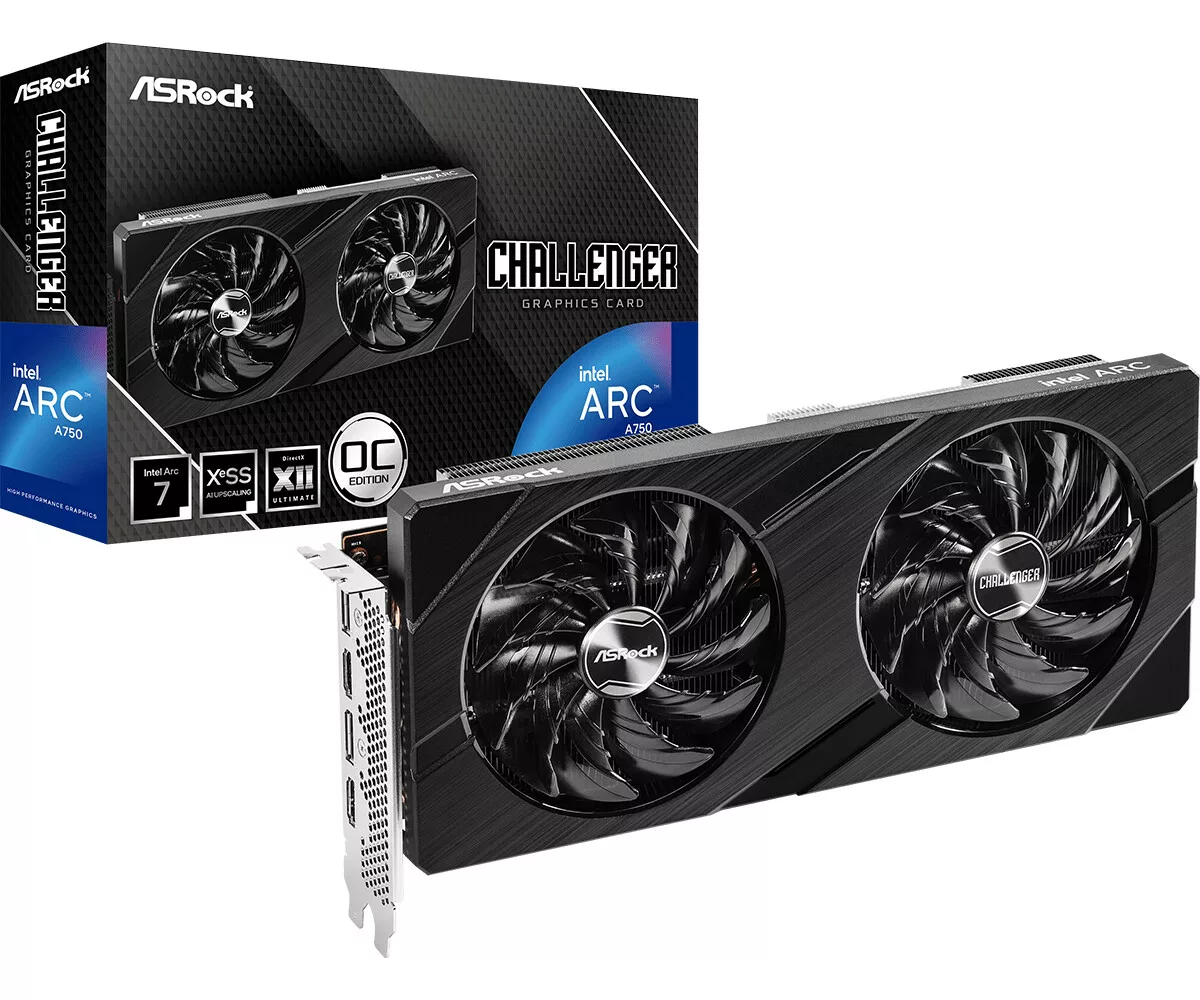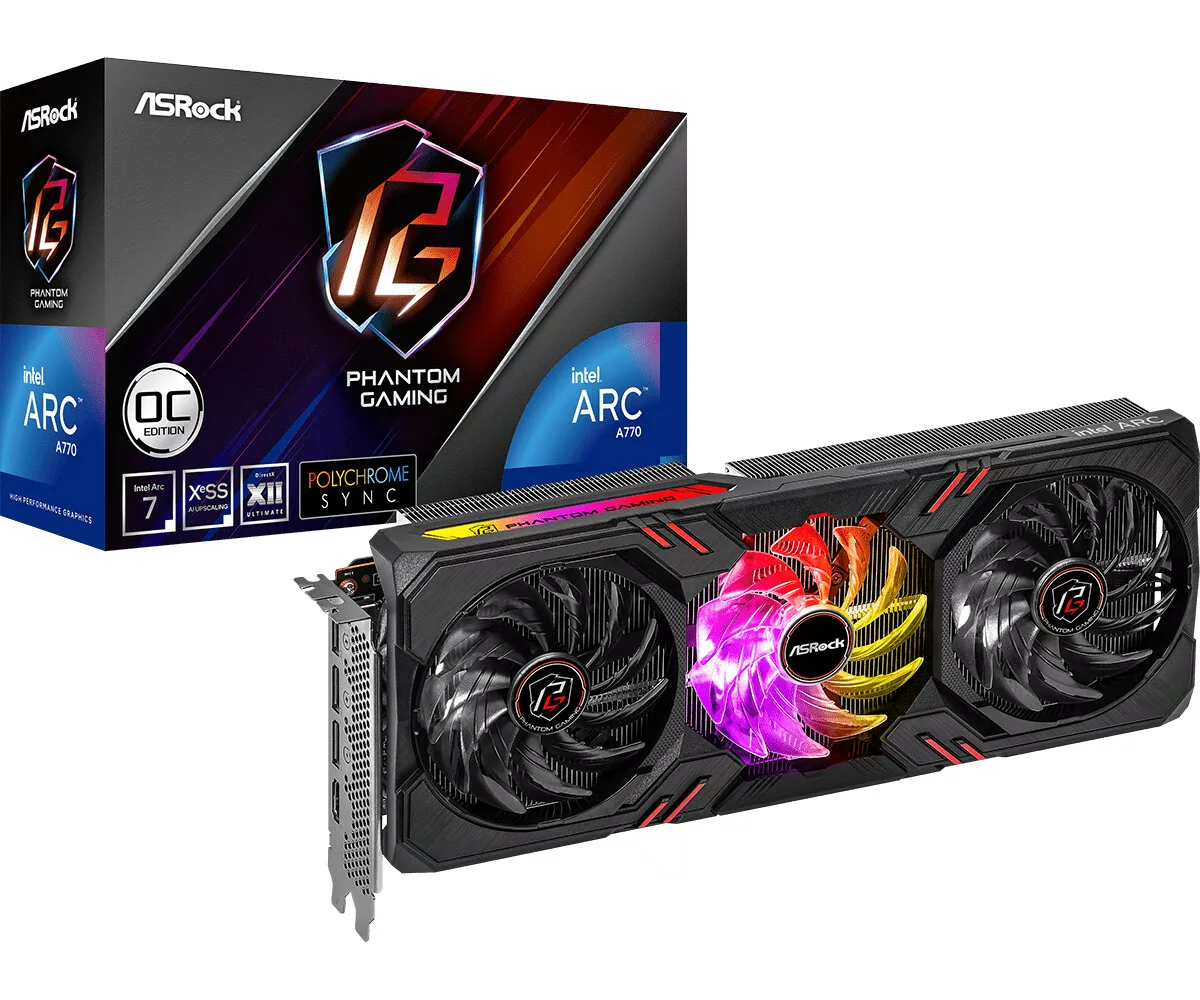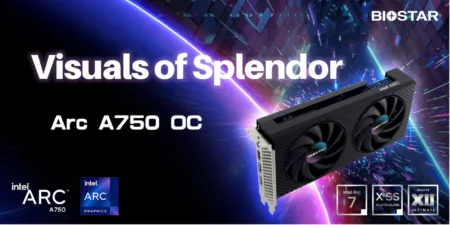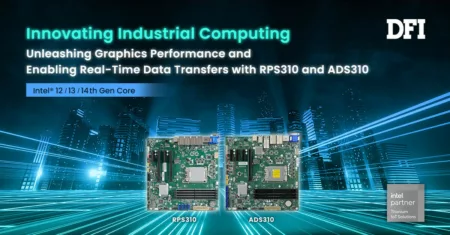Almost 3 months after its formal international launch, Intel’s A-Series Arc graphics card is now more prevalent with international territories receiving the ASRock Arc Challenger and Phantom Gaming models while some regions have the first-party Intel Limited Edition cards. Regardless, what’s key here is Intel’s current situation and with their DirectX 9 driver improving by a fairly large margin since launch, they’ve managed to show what a more mature Intel can do with their silicon.
In this video, we explore the performance of the Arc A750 via their partner manufacturer’s version, the ASRock Arc A750 Challenger D OC. This dual-slot GPU is currently the only internationally released Arc graphics card available besides Intel’s own-brand models although Acer’s Bifrost Arc cards seem to be made for retail and not their own systems so those may also be up for sale in some regions.
ASrock Arc Challenger and Phantom Gaming Graphics cards
Intel currently only has the Arc A380, Arc A750 and Arc A770 available for sale. This extends to their partners who are selling select Arc models. In ASRock’s case, their Arc A380 and Arc A750 will be part of their Challenger line of graphics cards while the Arc A770 will be under the Phantom Gaming family of graphics cards.
ASrock’s Challenger family of graphics card feature a non-LED cooler with a plastic shroud while the Phantom Gaming cooler is made with a triple fan cooler with a central LED fan.
The Arc A750 we’re reviewing today requires two 8-pin power connectors and is a dual slot card. It has two DisplayPort output and two HDMI output as well.
There’s really nothing special with these cards and they resemble ASRock’s Radeon efforts with a simple cooler managing thermals for a decently made board. Between the Phantom Gaming and Challenger, the Phantom Gaming Arc A770 will be the more flashy model but is limited to that card alone while the Ac A750 and Arc A380 relegated to the simple Challenger whiich features no lights or other pageantry.
ASRock Arc A750 Performance Summary
Final Thoughts and Conclusion
For more details on the performance of the ASRock Arc A750 Challenger, check out the video for more details on specific games including raytracing and XeSS results.
Intel has been the tech media’s punching bag for so long now and its quite hard to see them as the underdog with Arc Graphics. Regardless, it is quite evident this is a work-in-progress for Intel and they have a lot of catching up to do stand on equal ground with AMD and NVIDIA in the higher.
In the upper entry level and mainstream market though, Intel may have a fighting chance and the A750 looks to be the beetter value in its space. The thing here though is that it comes at a time where graphics card pricing have just come down an all-time high but AMD and NVIDIA have chosen to remain at those prices.
At Philippince pricing, the Arc A380 sits comfortable ahead of the venerable GTX 1050 Ti which now goes for 2x its launch price 5 years later. The main difference between these two is that the GTX 1050/Ti and GTX 1650 don’t require PCIe power while the Arc A380 does. This sitaution extends to the Arc A750 and its primary competitors, the RTX 3050 and the Radeon 6600 XT. With the Radeon currently hard to find with remaining stocks of the RX 6650 XT still costing more than the RTX 3050, the direct head-to-head at this price point in the Philippine market would be the RTX 3050 and the Arc A750.
Between those two, the Arc A750 trades blows only beaten out by the RTX 3050 by 4% in a 12-game average in games like Rainbox Six Siege and other unoptimized titles where the Arc card slows to a crawl. In DX12 games though, both 1080p and 1440p performance is admirable on the Arc A750 which should be a key consideration when shopping for cards in the Php16,000 to Php18,000 price range.
Everything hinges on extras though and AMD is left out of the conversation as FSR while still maturing, is just a blurry mess at 1080p and Intel XeSS imaqe quality and performance already shows AMD’s sore point in their upscaling tactic. Intel XeSS does have a weaknness and its currently support.
There’s still only a few games out with XeSS and nothing we’d call sizable in terms of userbase. But this was equally the same as with DLSS when it came out. Should Intel get their XeSS tech on more games and improve visual quality as well, it should only be a couple of years where its going to be commonplace in PC games.
For now though, XeSS still gets praise thanks to its great performance uplift versus AMD and it gives NVIDIA’s DLSS a run for its money. It still needs growing though as there are edge artifacts with XeSS enabled in some games. In 1440p though, this does improve by a fair amount and by 4K, is just pristine to look at.
There’s really no straight answer when recommending the Arc A750. It is a good card and value is decent at the right perspective. Intel’s AAA network of developers should suggest they will definitely be working better with larger studios but its best to check the game and what it supports on launch. For the most part, AV1 encode and decode, fairly low operating temps as well as XeSS offset the card’s high power draw which is pretty much my only complaint with this card.
ASRock’s decision to stock to a wider 2-slot cooler than a smaller card makes sense to give the A750 a more valuable feel and it also keeps the card cool in return.
In closing, both Intel and ASRock deserve props for the Arc A750 and if performance alone is the only deciding factor, then there are other options out there but at this point in time, last-gen cards and second-hand RTX 30 or Radeon RX 6000s are not that abundant so ultimately, the tie-breaker here if you want to go Arc is purely discovery. If you want to experience the growth of a young Intel GPU and learn how it evolves from this day, then if you can afford that adventure, then that’s something I can definitely get behind.
ASRock backs the Arc A750 Challenger D with a 2-year warranty.








4 Comments
Thats a start, kahit siguro mabagal yan pero kung sakaling maging successful rin sila sa GPU market eh sila na magiging 3rd option di lang amd and nvidia.
nice niceeee
Very impressive!
Brian Chong Yu Chong a750 naman nklagay? or naupdate na ni boss mac